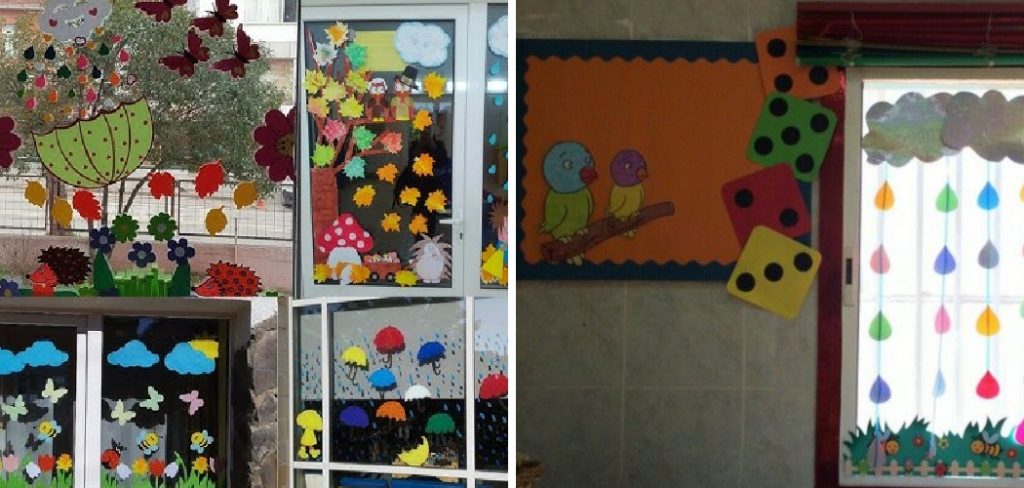5 Creative Ways to Transform Classroom Decor for Learning

Creating an inspiring classroom environment is more than just adding color or hanging posters; it's about crafting a space that stimulates thinking, encourages creativity, and fosters learning. Here are five innovative strategies to transform your classroom decor, ensuring it not only looks good but also supports educational objectives.
1. Interactive Learning Zones


Instead of traditional classroom seating, set up different zones within the room, each dedicated to various subjects or learning activities. Here’s how to do it:
- Reading Nook: A cozy corner with comfortable seating, bean bags, and shelves filled with books. Enhance it with dimmable lights to adjust reading atmosphere.
- Math Station: Equip this area with interactive math tools like number lines, abacuses, or even a small chalkboard for working out problems.
- Science Lab: A place where students can experiment with simple setups or use microscopes. Include storage for materials and safety equipment.
- Art Area: Stock it with craft supplies, easels, and various mediums for art projects. Make sure there’s space to display student work.
📝 Note: Design the layout in a way that these zones do not disrupt the classroom’s core functionality or distract from lessons.
2. Wall of Fame for Student Achievements


Celebrating student achievements can be incredibly motivating. Consider these ideas:
- Create a dynamic display of students’ work using rotating exhibits or a digital frame.
- Use string lights or backlighting to highlight key achievements, making them shine.
- Incorporate interactive elements like touch-sensitive screens where students can view their projects or awards.
This wall not only boosts student morale but also provides a visual representation of classroom progress.
3. Educational Graffiti


Utilize wall space for creative educational murals:
- Collaborate with students to design murals or graffiti art that reflects curriculum themes. Use washable or erasable markers to allow for changes over time.
- Include elements of various subjects; for instance, historical timelines, scientific principles, or linguistic facts can be depicted through art.
- Integrate QR codes or augmented reality markers that students can scan to access additional information or interact with the content.
This approach brings a street art vibe to learning, making information accessible and engaging.
4. Cultural Corner


Diversity in education can enhance understanding and tolerance. Here’s how to set up a cultural corner:
- Display flags, traditional wear, and art from different countries, or dedicate each section to a specific culture.
- Include interactive elements like puzzles or games related to cultural education, which can serve as fun learning tools.
- Host rotating exhibitions or invite guest speakers to share their cultural heritage with students.
This corner promotes global awareness and provides a platform for cultural exchange within the classroom.
5. Flexible Furniture and Layout


Moving away from rigid seating arrangements can foster creativity and collaboration:
- Introduce versatile furniture like tables with adjustable heights, stackable chairs, and standing desks to suit different teaching methods.
- Use movable partitions or screens to quickly change the room layout for group work or individual tasks.
- Consider seating arrangements that encourage interaction, like U-shaped or circular setups.
Flexibility in classroom design supports varied teaching approaches and student engagement.
Revamping your classroom decor with these five creative strategies doesn't just make it visually appealing; it transforms the learning environment into a space where students are actively engaged, feel valued, and are motivated to explore and learn. Whether through interactive zones, a wall celebrating achievements, or embracing diversity with a cultural corner, each element contributes to a dynamic and educational setting that promotes growth and curiosity. Remember to keep the design adaptable, allowing for future modifications as educational needs evolve, ensuring your classroom remains a place where students love to learn.
How often should I change my classroom decor?

+
While there’s no strict rule, changing classroom decor periodically, like at the beginning of a new term or season, can keep the environment fresh and engaging. However, core elements like learning zones or the cultural corner might remain constant, with only minor updates or rotations for themes.
Is it necessary to have all these zones in a small classroom?

+
Not necessarily. Even in smaller classrooms, you can still implement some of these ideas by using creative space management. For instance, using foldable or stackable furniture to quickly change layout, or utilizing wall space for interactive displays.
How can I involve students in decorating the classroom?

+
Involve students by allowing them to design or contribute to various elements like the wall of fame, educational graffiti, or even the layout of learning zones. This can be done through art projects, research assignments, or simple brainstorming sessions.



